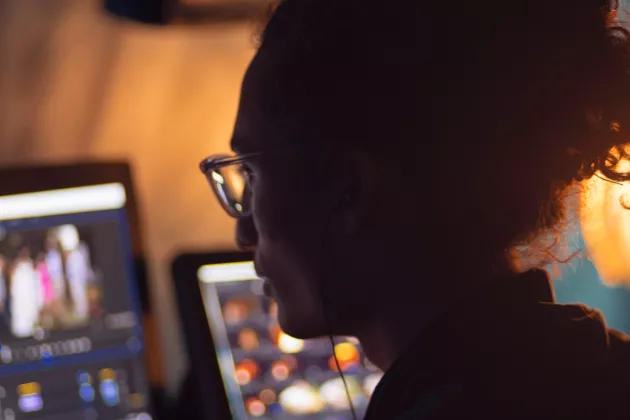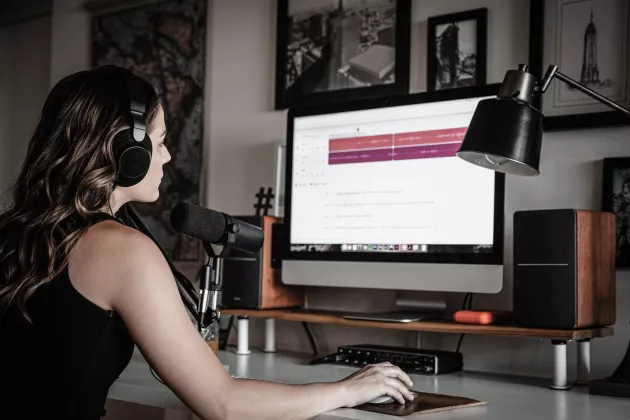Photo: Surface on Unsplash.com and Johan Bävman.
My idea is that the students should be given the best possible conditions for deep learning and then it is important that we use the time we have together to the maximum. Instead of the time we have together going to monologues, where I talk to the students, I strive to bring about dialogue between me and the students, and among the students, so that we talk to each other.
Usually, I design my courses in modules that deal with particular themes and I usually end up with four to six modules per course. A module consists of four parts:
- individual preparations
- group discussion
- interactive seminar
- individual final reflection
The ambition is that the students gradually build up their understanding and abilities by first studying individually, then learning from those in their group and, during the seminar, learning from students from other groups. I come in at the final stage, to support the students with what they have not been able to solve on their own. Among my colleagues, we have for a long time talked about the students being the ones who drive their own learning. This is my way of creating the conditions for that to happen.
In addition to the course design, the students' attitude to the structure and atmosphere of the classroom is a central building block as well as the material available to the students during their self-study. Below I will tell you about how I use video in these contexts.
The video format gives students better conditions for self-studies
My idea with my lectures is not that I should "go through" the course material, but that I should support exactly where support is needed. Where support is needed can be individual and that's why video is a good format, I think. Those who want to can see them and if necessary, see them several times.
In practice, this means that I do short (about 10-minutes) lectures on the subjects that I find the students having a hard time understanding on their own. Usually it is overviews (e.g. to give an overview of different possible forms of governance in an organization, something described in different places in the book), or to exemplify and explain in more detail a difficult concept or perspective (e.g. leadership from a SIT perspective).
In my course design, different forms of feedback are important to me. I want the students to work themselves as much as possible, and to support this process I make sure to get input from them at several stages of the process. Before the seminar, the students do written assignments, during the seminar I use padlet, google.docs or the whiteboard for the students to share their thoughts, and after the seminar the students write final reflections on what they bring from the module and whether they have any unanswered questions. This input guides me in what to focus on when we meet. And if I notice that I, on recurring occasions, need to give a (short) lecture to clarify a topic, I have recorded them and offer them as tutorials instead. In this way, I free up additional time in the classroom, and give the students better conditions for self-study. In this way, over the years, I have built up a bank of various mini lectures that I use when I think they are needed.
Create plain and generic videos
I have scaled off my videos so that they are generic and thus can be used in several different contexts. For example, when I have noted a need for it, I have offered basic lectures even at the bachelor level (for repetition or to ensure that students from different institutions, within higher education, have a similar conceptual apparatus).
When I started experimenting with video in teaching, I tried power point images with and without a picture of myself in it. That was before we had the possibility to record with a green screen as we do now. Several students then commented that they didn't need to see me, and that it could even be distracting with a picture in the corner. I then switched to doing only screencasts, i.e. I do a screen recording where I talk to a slideshow. Instead of spending time getting a good recording of myself, I now spend more time illustrating what I am talking about, so that the power point presentation becomes interesting and clarifying.
Advice if you are considering using videos in your teaching
- Just start and try different ways. Different courses have different conditions.
- Ask for feedback. I have received incredibly valuable feedback from the students that has enabled me to develop my courses to where they are today.
- Try out together! I have been met with great openness and interest in jointly testing and exploring new educational pathways.
In some contexts, I also let the students themselves record short videos where they summarize a particular theme or article. This doubles the learning: The students creating the video will (usually) gain an in-depth understanding of the subject, while at the same time providing other students with additional tutorials.
In course evaluations I have received comments such as "creative and interesting teaching method, high engagement in deep-learning, open for feedback - in general an excellent high-qualitative course!!" One of my Swedish students wrote that the level of teaching was "incredibly high" and that learning was taken "to new dimensions". Although it is difficult to comment on the exact effects of my pedagogy, I take these kinds of statements as indications that my pedagogical ambitions are reaching out.
Nadja Sörgärde, Senior Lecturer in Business Administration






